
German postcard by Ross Verlag, no. 1435/1, 1927-1928. Photo: Paramount-Film.
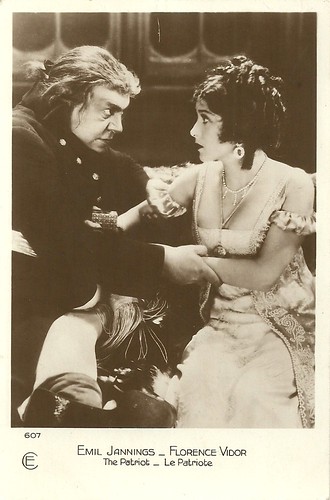
French postcard by Cinémagazine-Edition, no. 607. Emil Jannings and Florence Vidor in The Patriot (Ernst Lubitsch, 1928).

German postcard by Ross Verlag, no. 3989/1, 1928-1929. Photo: Paramount.

German postcard by Ross Verlag, no. 4683/1, 1929-1930. Photo: Paramount. See also this postcard, Vidor wears the same dress.

German postcard by Ross Verlag, no. 5149/1, 1930-1931. Photo: Paramount.
In silent films through the influence of her husband
Florence Vidor was born Florence Cobb in Texas in 1895, the child of John and Ida Cobb. Her parents had married in Houston in 1894 but they divorced only three years later. Ida remained in Houston and soon married John P. Arto, a real estate man who later served as deputy chief of the city's fire department.
Florence Vidor started working in silent films through the influence of her husband, film director King Vidor, whom she had married in 1915. She signed her first contract with Vitagraph Studios in 1916 and became known for her part in the Charles Dickens adaptation A Tale of Two Cities (Frank Lloyd, 1917).
At Jesse Lasky/Paramount, Vidor was paired with Sessue Hayakawa in several films such as The Secret Game (William C. de Mille, 1917), and with crossdresser Julian Eltinge, such as The Countess Charming (Donald Crisp, 1917).
From 1919, King Vidor also directed her at his own studio, Vidor Village, in films such as The Other Half (1919), Conquering the Woman (1922), and most memorable, Alice Adams (1923).
A touching melodrama was the Thomas Ince production Hail the Woman (John Griffith Wray, 1921), which when found and restored in recent years still emoted audiences.

French postcard by Cinémagazine-Édition, Paris, no. 65. Photo: Paramount.
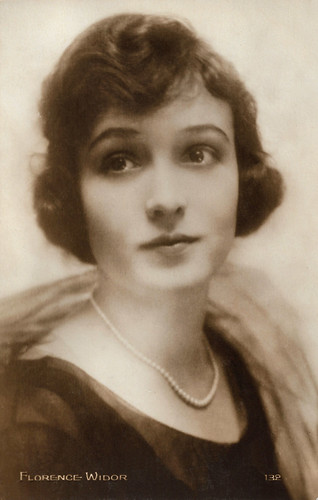
French postcard by Editions Cinémagazine, no. 132.
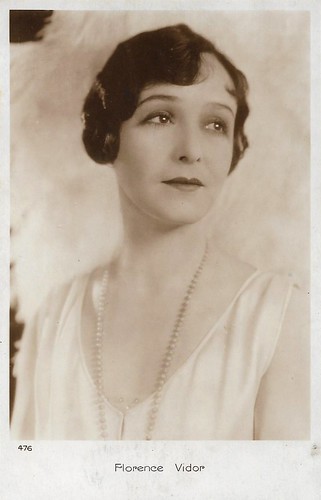
French postcard by Cinémagazine-Edition, Paris, no. 476.

French postcard by A.N., Paris, no. 349. Photo: Paramount.
A major box office attraction for Paramount
Throughout the 1920s, Florence Vidor was a major box office attraction for Paramount Pictures. Her forte was sophisticated comedies. Memorable was the witty comedy The Marriage Circle (1924) by Ernst Lubitsch, also with Monte Blue, Creighton Hale, Adolphe Menjou, and Marie Prevost. Lubitsch directed her again in the Emil Jannings vehicle The Patriot (1928).
Also memorable were The Grandduchess and the Waiter (Malcolm St. Clair, 1926) with again Adolphe Menjou, and The Magnificent Flirt (Harry d'Abbadie d'Arrast, 1928) with Loretta Young. Yet, Vidor's performance with Gary Cooper in Doomsday (Rowland V. Lee, 1928) was less successful.
Florence Vidor's career ended with the advent of sound films. In 1929 she became so frustrated by the difficulties of making the partial sound film Chinatown Nights that she retired from acting before the production was completed. Director William A. Wellman had to use a voice double to complete some of her scenes.
Florence and King Vidor divorced in 1924. Their marriage produced a daughter, Suzanne (1918–2003). Despite the end of their marriage, Florence continued to use Vidor as her surname.
In 1926, she married classical violinist Jascha Heifetz. They had two children together and Heifetz also adopted Suzanne before divorcing in 1945. Florence Vidor died in California in 1977. She was 82.
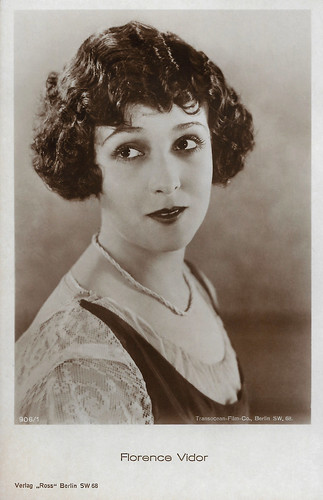
German postcard by Ross Verlag, Berlin, no. 906/1, 1925-1926. Photo: Transocean-Film-Co., Berlin.
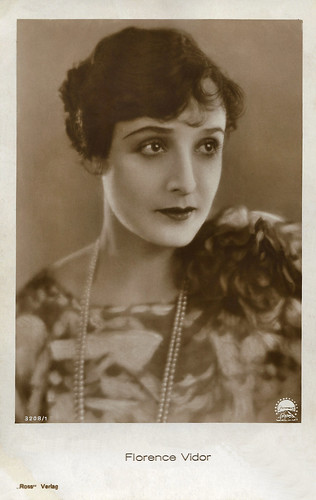
German postcard by Ross Verlag, no. 3208/1, 1928-1929. Photo: Paramount.

German postcard by Ross Verlag, no. 4988/1, 1929-1930. Photo: Paramount Pictures.

German postcard by Ross Verlag, no. 5149/1, 1930-1931. Photo: Paramount.

Spanish postcard in the Estrellas del cine series by Editorial Grafica, Barcelona, no. 50. Photo: Paramount Film.
Sources: Gary Brumburgh (IMDb), Wikipedia (English, French, and German), and IMDb.
No comments:
Post a Comment